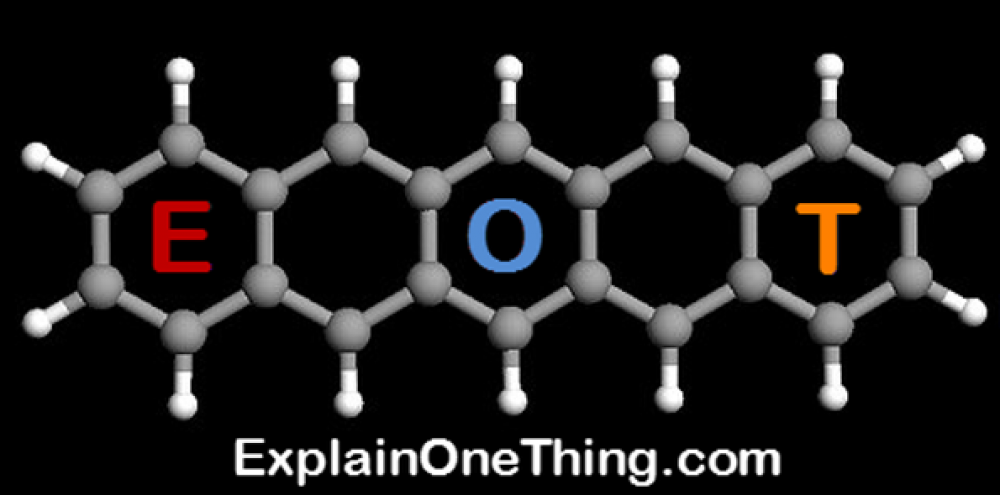My poor parents – especially my Dad. When I was young, I never stopped asking questions. I was like David After Dentist but I never sobered up and quit. Eventually, my Dad started acting like he was hard of hearing, but oddly, only when it was just the two of us. I often wonder if this isn’t a reason why so few kids end up in science – it can be very hard to encourage constant questioning and that’s one of the most important qualities of a scientist. Today, let’s ask about the “guts of an atom.”

Protons, neutrons and electrons scaled to a pool table. Think of the neutron as a cue ball, the proton as an eight ball and the electrons are tiny BBs.
Last post was about Dalton’s Atomic Theory, and before that, about the atomic nature of the physical universe. Now it’s time to drill down into the atom. I’m going to talk about this from the perspective of a chemist – which limits us to only three basic parts: the proton, the electron and the neutron. Each of those parts is made up of even more fundamental bits – quarks, charms, strings, and on and on. The dividing line is one based on energy. Super high energies – far greater than those one can obtain even at the center of a hot, hot sun – are necessary for the proton, neutron and electron to be broken into the pieces studied by high-energy physics. That’s the world the guys on “The Big Bang Theory” live in – they use super powerful machines to create those high energies but a chemist works in the world of every day heat and energy. And at temperatures up to 10,000 degrees or so (no matter which scale) we can only affect the three basic particles mentioned above, so for all practical purposes, everything we will encounter in the physical world can be thought of as made up of protons, electrons and neutrons. In fact, the difference between the elements really depends only on the number of protons in an atom. Whether that atom is charged plus or minus depends on the number of protons and electrons. And exactly how much it weighs forces us to consider the number of neutrons but in general, neutrons simply provide mass, which is not all that interesting in most cases. That means understanding the “guts” of an atom means understanding how many neutrons, protons and electrons are present and where they live, but the most interesting things about the physical universe are really found in a count of protons and neutrons.
You will probably never “see” an atom. It’s too small for the wavelengths we can see to image it in a way we can understand. That means you will need to make up a picture in your head and that’s what scientists have done for years.
The details in the picture change slightly but very little has changed in the past 50 years. All the mass is carried in the very center of the atom – the nucleus which contains the neutrons and protons – and the size of an atom is determined by the space where the electrons are found. I think it works well to think of the neutrons and protons like billiard balls. The neutron is the cue ball – white and lacking in character, but of significant size and heft. The proton is the same size and weight (roughly) but it carries a positive charge, so I describe it as the 8-ball. These cue balls and 8 balls are packed together into a structure that can be thought of as spherical and is at the center of the atom. The electron is a tiny, tiny object that can be thought of as a single negative charged particle. It is so much smaller than a proton we ignore its actual mass in almost every case. It is NOT in the nucleus and it can be pictured as “moving” through a volume that surrounds the nucleus. If the nucleus were thought of as a tiny marble sitting on the fifty yard line of a football field, the electron would be a tiny bug flying around anywhere else on that field. If you understand the image I’m trying to construct, you will see that most of the volume of an atom is empty space. The mass is located in the nucleus but the volume is much greater and is defined by the possible locations where we will find the electron associated with that atom. This is a hard thing for many to understand. The electron is tiny, but it moves through a large space, like a ghost wandering around a big old haunted house.
So those are the details. The atom is made of the charged particles called protons and electrons. There is also an uncharged particle called a neutron that is much like the proton. The protons and neutrons weigh about the same, are located at the center of an atom and this is a very tiny part of the atom. Although tiny, the electrons are free to move through a relatively large volume and this is the volume that defines the size of an atom.
One of my goals is to keep these explanations short. I’ll stop here for now and next time, we will talk about how the number of protons in an atom define the element. See you then.

